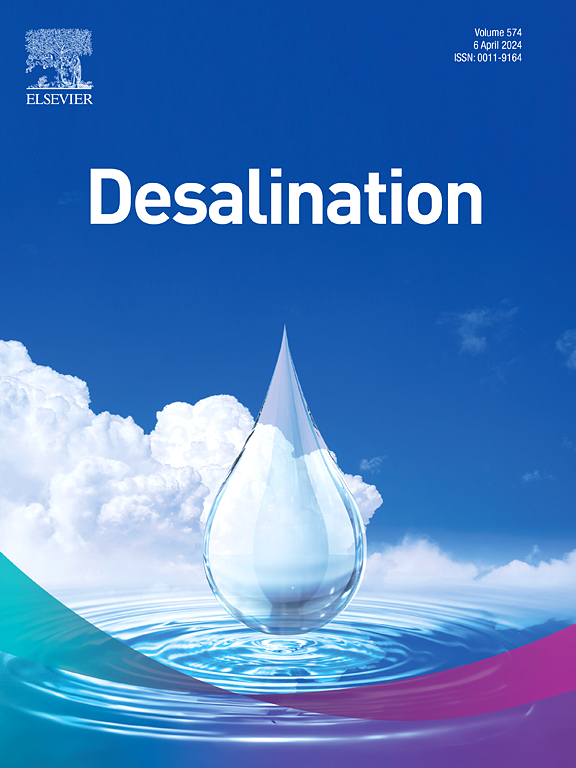A deep eutectic solvent extraction strategy based on primary ammonium and β-diketone for separating Li from high Na/Li brine
IF 9.8
1区 工程技术
Q1 ENGINEERING, CHEMICAL
引用次数: 0
Abstract
Old brine from salt lake often contain high proportions of mineral elements such as potassium (K) and sodium (Na), separating lithium (Li) from old brine is indeed a technical problem. In this study, a novel and low cost deep eutectic solvents (DES) formed by primary ammonium (RNH2) and 1-phenyl-8-methyl-1,3- nonanedione (Lix54–100) was prepared to separate Li from high Na/Li old brine. RNH2 used alone had no extraction effect, while Lix54–100 resulted in extraction emulsification. DES combined with RNH2 and Lix54–100 showed good separation efficiency and extraction phenomenon. Thermodynamics of DES extraction for Li was studied, theoretical calculations were conducted to investigate the extraction mechanism of Li. The optimized composition of DES between RNH2 and Lix54–100 was 1:1, and the extraction system had a higher Li saturation loading capacity of 8.58 g/L. The existence of CO32− was favorable for effectively separating Li and Na. The pH value had a significant impact on the extraction of Li. The fractional extraction process via DES from old brine was studied. Separation factor among Li and Na was 2307, accompanied 96.6 % Li yield through 4 extraction stages. Considering cost and environmental advantages, [RNH2][Lix54–100] has demonstrated the potential application value of extracting Li from old brine.

基于伯胺和β-二酮的深共晶溶剂萃取策略从高钠/锂盐水中分离锂
盐湖老卤水中钾(K)、钠(Na)等矿物元素含量较高,从老卤水中分离锂(Li)确实是个技术难题。本研究制备了一种新型低成本的深共晶溶剂(DES),该溶剂由伯铵盐(RNH2)和1-苯基-8-甲基-1,3-壬二酮(Lix54-100)组成,用于从高钠锂比老卤水中分离锂。单独使用RNH2无提取效果,而Lix54-100有提取乳化作用。DES与RNH2和Lix54-100的结合表现出良好的分离效率和萃取现象。研究了DES萃取锂的热力学,并进行了理论计算,探讨了锂的萃取机理。优化后的DES与RNH2与Lix54-100的配比为1:1,萃取体系具有较高的Li饱和负载能力,为8.58 g/L。CO32−的存在有利于Li和Na的有效分离。pH值对锂的提取有显著影响。研究了用DES分馏萃取老卤水的工艺。Li和Na的分离系数为2307,4个提取阶段的Li收率为96.6%。考虑到成本和环境优势,[RNH2][Lix54-100]在老卤水中提取锂的潜在应用价值。
本文章由计算机程序翻译,如有差异,请以英文原文为准。
求助全文
约1分钟内获得全文
求助全文
来源期刊

Desalination
工程技术-工程:化工
CiteScore
14.60
自引率
20.20%
发文量
619
审稿时长
41 days
期刊介绍:
Desalination is a scholarly journal that focuses on the field of desalination materials, processes, and associated technologies. It encompasses a wide range of disciplines and aims to publish exceptional papers in this area.
The journal invites submissions that explicitly revolve around water desalting and its applications to various sources such as seawater, groundwater, and wastewater. It particularly encourages research on diverse desalination methods including thermal, membrane, sorption, and hybrid processes.
By providing a platform for innovative studies, Desalination aims to advance the understanding and development of desalination technologies, promoting sustainable solutions for water scarcity challenges.
 求助内容:
求助内容: 应助结果提醒方式:
应助结果提醒方式:


